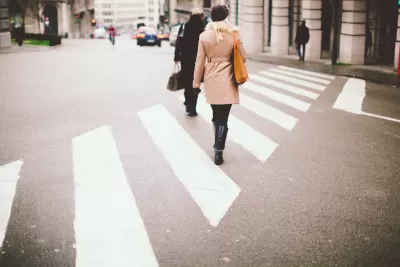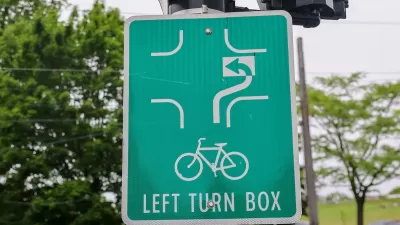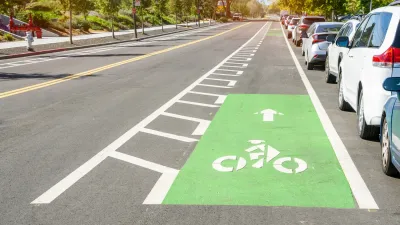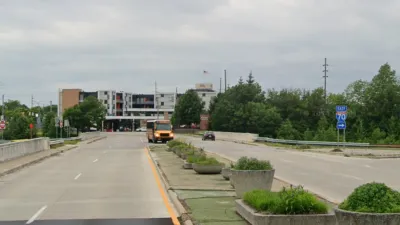After 11 years, the federal transportation manual is getting an update to reflect the rise of autonomous vehicles, shared mobility, and modernized pedestrian infrastructure.

The Federal Highway Administration has extended the public comment period for its update of the Manual of Uniform Traffic Control Devices (MUTCD). The manual, which hasn't been updated since 2009, "sets federal standards for the signs, markings and signals that help instruct road users on how to safely move through our communities."
As reported by Kea Wilson in Streetsblog, advocates hope that the revised manual will take into account new programs and mobility options such as bike share, scooters, and autonomous cars and implement higher standards for protecting vulnerable users. Rather than prioritize vehicle throughput above safety, planner Don Kostelec told Streetsblog, the manual should include the highest standards for safety at crosswalks and other vulnerable interaction points.
The main reason for the manual's upcoming revision seems to be the rise of autonomous vehicles, "which rely on regular road markings to navigate complex road environments," but some of these changes may work in favor of bike advocates. For example, the revised manual calls for bike facilities to be "segregated from other vehicle traffic using physical barriers where practicable and that road markings are needed to denote the end of a bike lane that is merged with traffic" in order to accommodate "machine vision." Such policy changes in manuals like the MUTCD, argues BikeUtah program director Mike Wiltsie, is "the best way we can bring about systemic change in our streets."
FULL STORY: Memo to Buttigieg: Fix Our National Traffic Control Standards

Planetizen Federal Action Tracker
A weekly monitor of how Trump’s orders and actions are impacting planners and planning in America.

Congressman Proposes Bill to Rename DC Metro “Trump Train”
The Make Autorail Great Again Act would withhold federal funding to the system until the Washington Metropolitan Area Transit Authority (WMATA), rebrands as the Washington Metropolitan Authority for Greater Access (WMAGA).

The Simple Legislative Tool Transforming Vacant Downtowns
In California, Michigan and Georgia, an easy win is bringing dollars — and delight — back to city centers.

The States Losing Rural Delivery Rooms at an Alarming Pace
In some states, as few as 9% of rural hospitals still deliver babies. As a result, rising pre-term births, no adequate pre-term care and harrowing close calls are a growing reality.

The Small South Asian Republic Going all in on EVs
Thanks to one simple policy change less than five years ago, 65% of new cars in this Himalayan country are now electric.

DC Backpedals on Bike Lane Protection, Swaps Barriers for Paint
Citing aesthetic concerns, the city is removing the concrete barriers and flexposts that once separated Arizona Avenue cyclists from motor vehicles.
Urban Design for Planners 1: Software Tools
This six-course series explores essential urban design concepts using open source software and equips planners with the tools they need to participate fully in the urban design process.
Planning for Universal Design
Learn the tools for implementing Universal Design in planning regulations.
Smith Gee Studio
City of Charlotte
City of Camden Redevelopment Agency
City of Astoria
Transportation Research & Education Center (TREC) at Portland State University
US High Speed Rail Association
City of Camden Redevelopment Agency
Municipality of Princeton (NJ)





























